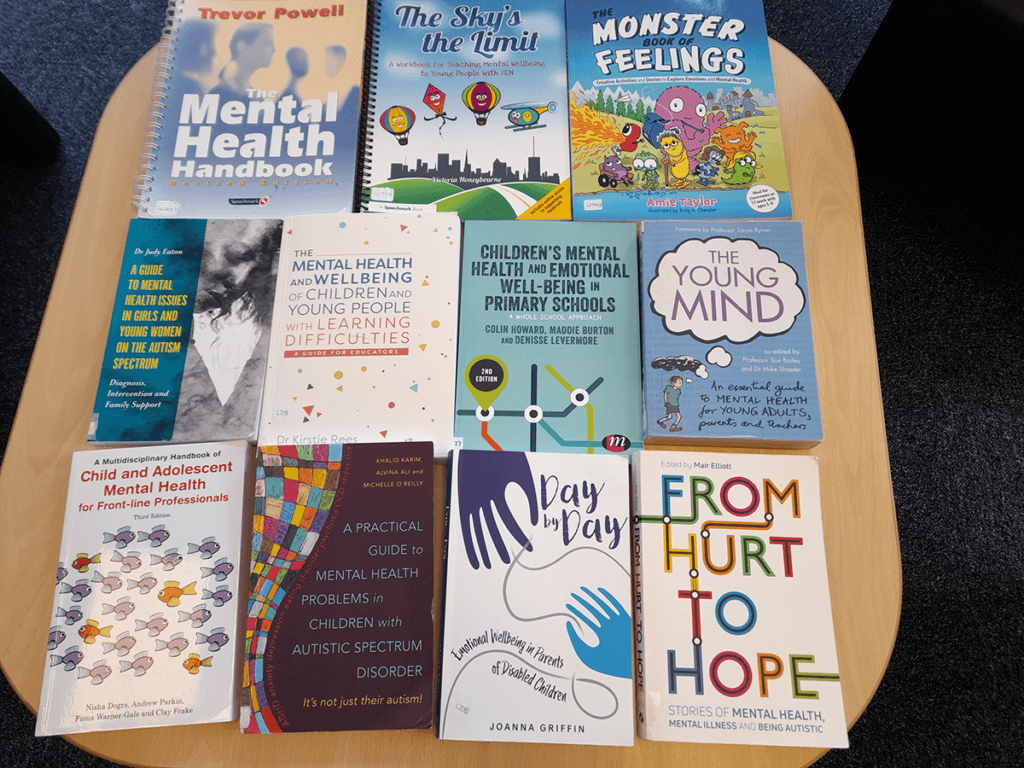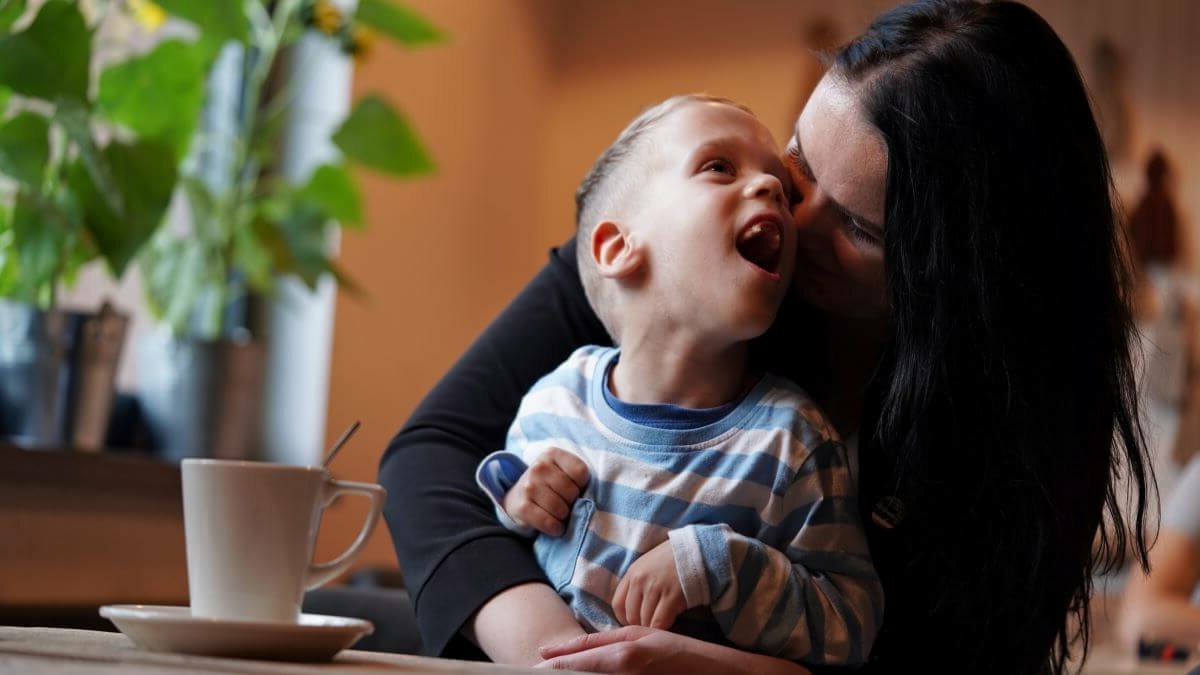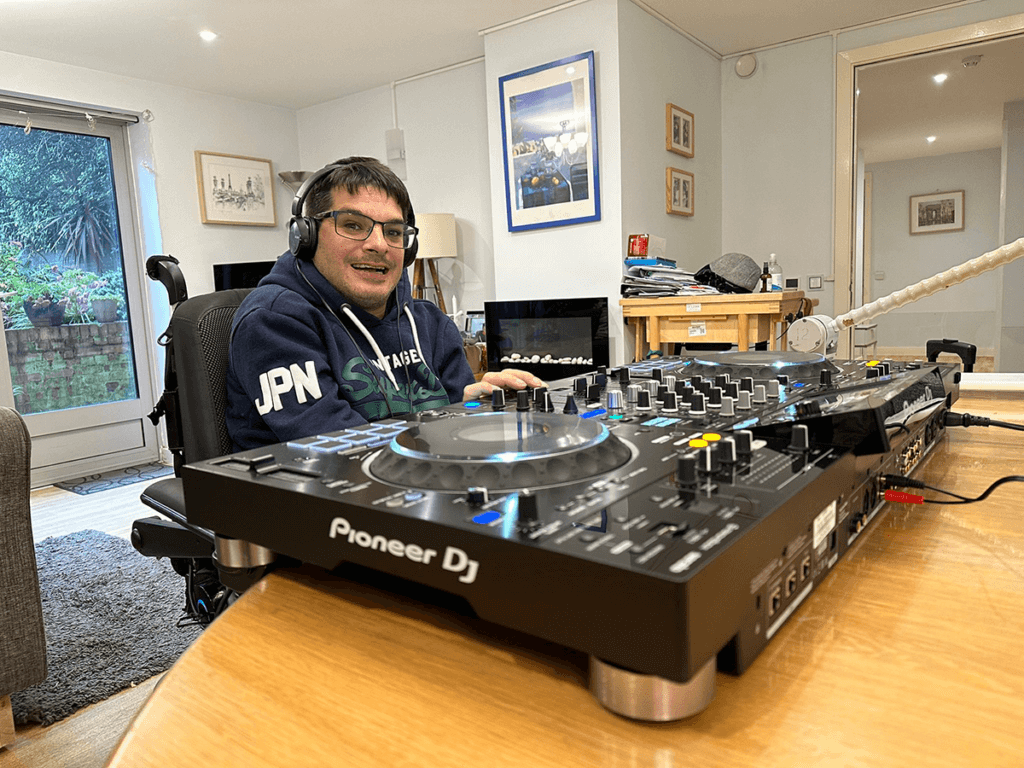
Dr Jo Moss, Lecturer in Psychology at the University of Surrey, opened the February CEDAR seminar by sharing a story of a young man who had a rare genetic syndrome, but who also showed autism characteristics such as repetitive behaviours and a strong preference for routine from a young age but had never been diagnosed with autism.
When he transitioned to college, his routine was no longer in place and he experienced difficulties both with his learning and his mental and physical health. Reaching a crisis point, he withdrew from the college and at this point, was assessed and diagnosed with autism. Dr Jo Moss highlighted this young man’s story as an example of the challenges in diagnosing autism in individuals with genetic syndromes and the importance of recognising patterns of autism in these individuals who may be slipping through the cracks in terms of recognition, assessment, clinical services, and support.
Autism characteristics are commonly reported in individuals with genetic syndromes with intellectual disability, and research has found that individuals with genetic syndromes are at least 10 times more likely to show autism characteristics than the neurotypical population (see Richards et al., 2015). These prevalence rates are significantly higher than in a wider intellectual disability population.
Dr Jo Moss also spoke about work she was involved with in collaboration with Dr Jenny Sloneem at Great Ormond Street Hospital, who runs a clinic for individuals with Sturge-Weber Syndrome (see Sloneem et al., 2021). They found that autism in individuals with rare genetic syndromes is less likely to be picked up and recognised in clinical services and the mean age of diagnosis was nearly 9 years old, later than expected. Dr Jo Moss also noted that this study showed that children were only being picked up in a very specialist clinic, highlighting the need for access to these types of services and this form of assessment.
Difficulties Recognising Autism in Genetic Syndromes
Dr Jo Moss noted that lack of recognition of autism in genetic syndrome groups can be due to a number of factors. There may be difficulty in disentangling autism from intellectual disability and from particular characteristics of genetic syndromes. There may also be challenges with the assessment tools leading to difficulties, as they may not be appropriate for rare genetic syndrome groups or there could be overlap and differences in interpretation within assessment measures.
It is also important to note here that many of the following studies discussed below reference the Social Communication Questionnaire (SCQ). This is a measure looking at communication skills and social functioning. The SCQ is often used to screen individuals for autism, where clinicians look at whether SCQ scores are consistent with a diagnosis of autism.
1. Overlap with intellectual disability
The first of three key difficulties discussed by Dr Jo Moss was the potential overlap with intellectual disability, as it has been suggested that one of the key difficulties in diagnosing autism in individuals with intellectual disability is the overlap between autism and intellectual disability itself. While there are a proportion of individuals across a range of syndromes who meet the cut-off score of the SCQ and therefore likely meet diagnostic criteria for autism, there are similarities and differences across syndrome groups and the overlap between autism and intellectual disability does not appear to be the full picture.
Dr Jo Moss highlighted the example of individuals with Cri du Chat versus Cornelia de Lange syndrome, as these syndromes have similar levels of intellectual disability. Despite the similar level of intellectual disability, the two groups showed very different associations with prevalence of autism characteristics, suggesting that it’s not just about degree of intellectual disability. Further comparative studies support this. When individual groups are matched on age and level of intellectual disability, individual genetic syndrome groups such as Cornelia de Lange are more likely to meet cut-off scores on the ADOS (Autism Diagnostic Observation Schedule; often used to assess and diagnosis autism). For example, individuals with Cornelia de Lange were more likely to meet cut-off scores both compared to other genetic syndrome groups and to a broader group of individuals with general intellectual disability.
This suggests that although there may be some difficulty in assessing autism characteristics, it is not as simple as an overlap with intellectual disability as syndrome groups, and individuals within these groups, display different profiles. This leads us to the second point.
2.Variability and Presentation of Autism and Autism Characteristics across syndromes
The second difficulty Dr Jo Moss highlighted was the variability in the presentation of autism and profile of autism characteristics across genetic syndrome groups.
Dr Jo Moss showed data from a new approach from Postdoctoral Researcher Dr Natali Bozhhilova, who has used a machine learning method to look at whether it’s possible to classify genetic syndrome group based on their profile of SCQ scores. Natali found that for some syndrome groups, such as Angelman syndrome and Fragile X syndrome, there was good accuracy in assigning groups based on the profile of their SCQ scores. Dr Jo Moss suggested that this could be described as syndrome-specific ‘signatures’, where it’s possible to correctly classify groups based on their SCQ scores. However, this wasn’t the case for all groups, indicating that the profile of social communication skills is much more variable for certain genetic syndrome groups, such as tuberous sclerosis.
Also summarised were a range of studies which have found differences in the profiles of autism characteristics across genetic syndrome groups. For example, when looking at individuals with Cornelia de Lange syndrome, Fragile X syndrome, and autistic individuals, the Cornelia de Lange group show a very different profile to Fragile X or autistic individuals, while Fragile X show a similar pattern to autistic individuals but at a lower level, also suggesting a difference (see Moss et al., 2013).
To learn more about autism and autism characteristics in different genetic syndromes, the FIND website provides information for each syndrome, with videos, summaries, and further reading available.
These findings have a clear impact on clinical practice, as it shows it’s important for people working with individuals with genetic syndromes and their families to be aware of the profile and characteristics of autism which may be specific to each genetic syndrome, while acknowledging that there may be differences both between and within groups.
3. Variability in Trajectory of Autism Characteristics
Finally, Dr Jo Moss made the point that the differences across syndrome groups do not just relate to the autism characteristics themselves, but also the trajectory of these characteristics. A study following up individuals with Cornelia de Lange and Cri du Chat syndrome found that the difference in scores is large, but the trajectory is similar in some areas and very different in other areas (see Cochran et al., 2019). Although children with Cornelia de Lange syndrome had higher scores in all areas of the ADOS than children with Cri du Chat syndrome, the pattern of change over time was similar between the two groups, with an increase in communication scores and decrease in play and imagination scores for both. In contrast, the pattern for social interaction differed between the groups where individuals with Cornelia de Lange syndrome had an increase in scores while individuals with Cri du Chat syndrome showed a decrease in scores across the time points.
Dr Jo Moss also highlighted that questions remain on whether these findings such as a later development of social interaction difficulties indicate later development of autism characteristics or are due to difficulties becoming more evident at certain periods (such as moving schools or other changes in environments, similar to her example of the young man who transitioned to college). These may lead to difficulties and so therefore may be picked up at that time point.
The takeaway message from these findings is that autism characteristics in genetic syndrome groups are not static over time and are likely to be variable across syndrome groups, which we should keep in mind.
Impact on Accurate Assessment
Following the summary of these three key difficulties, Dr Jo Moss moved on to discuss the implications of these findings. It is clear that for some syndrome groups, there are particular autism characteristics which are commonly found for individuals within that group. There is both variability between and within syndrome groups, but the findings showing particular patterns and profiles for specific syndrome groups provides an argument that perhaps we should move towards syndrome-specific norms when assessing and working with individuals in clinical and educational practice.
It’s also important to note that the studies previously discussed have predominantly used the SCQ or the ADOS as a measurement tool. There may be other ways of measuring and assessing autism characteristics in genetic syndrome groups which should be considered.
A potential solution? Move to Social Cognitive Skills
Once Dr Jo Moss provided the summary of difficulties recognising autism and autism characteristics in genetic syndrome groups, she highlighted that her research team and other colleagues started to think about whether there was another approach that would allow them to explore these questions and address some of the difficulties summarised. They asked whether there is another aspect we can evaluate with greater accuracy, and whether this could help us to understand the heterogeneity of autism characteristics within these groups.
One of the key areas to explore is other ways to measure social cognitive skills in individuals with genetic syndromes. Dr Jo Moss and colleagues have been working on developing a group of tasks that would allow us to overcome some of the issues with measurement by using tasks looking at very early developing skills, tasks that are low in demand, and tasks which are not asking for explicit or verbal responses. This could include tasks that use eye tracking to look for gaze patterns, rather than explicitly asking for a verbal response from an individual. This is also a key area to explore as social cognition research has often not included individuals with intellectual disability, and so is a step towards wider accessibility of social cognition research.
One of the examples used was a study by Dr Hayley Crawford which used eye tracking to look at individuals with Cornelia de Lange, Fragile X, and autistic individuals. By presenting individuals with two simultaneous videos of social or non-social (person or object) interactions and using eye tracking to follow gaze patterns, it was possible to show differences between the groups. The Cornelia de Lange group had a greater preference for social information than the autistic group, with Fragile X between the two groups in terms of preference. To find out more about this study, it is freely available to read here.
Conclusion and Next Steps
Overall, Dr Jo Moss provided a summary of difficulties in identifying and diagnosing autism and autism characteristics in individuals with genetic syndromes. Evidence suggests that autism and autism characteristics are high in these groups, and genetic syndromes have particular profiles and characteristics of autism that are specific to their genetic syndrome group. As certain groups are more likely to show autism characteristics compared to others, it is important to recognise this and also continue research to move towards syndrome-specific norms for each genetic syndrome.
Given the limitations of current measurement tools, Dr Jo Moss argues for continued development of research using methods in the field of social cognition. Methods such as eye tracking may be particularly useful for including individuals with few or little words and can use tasks which are accessible to wider groups of individuals with intellectual disability. They could also capture other aspects of social interaction not covered by autism-specific assessments, and provide further detail on syndrome specific characteristics and subtle differences at the behavioural and social-cognitive level.
We should continue to work on further support for assessment and diagnosis of autism in genetic syndrome groups, as it is often missed or delayed despite evidence that prevalence of autism characteristics in genetic syndromes is high. This will allow for better support and intervention for children and their families, allowing for tailored support taking into account autism characteristics and syndrome-specific considerations.
Find Out More
To find out more about the research, publications, and work coming from Dr Jo Moss’ Research Lab, see their website here. To find out more about the Cerebra Network for Neurodevelopmental Disorders, see their website here.
Finally, the FIND website is a great resource where you can also find a number of guides, parent resources and videos along with their manual of assessment and measures, all of which were co-developed by members of Cerebra Network for Neurodevelopmental Disorders.
Dr Joanna Moss is a Lecturer in Psychology at the University of Surrey where she runs the Neurodevelopmental Research Lab. She is also one of the Network Directors of the Cerebra Network for Neurodevelopmental Disorders.
Caitlin Murray is a Research Fellow at CEDAR, the University of Warwick.










I would like to print this out to keep as my daughter has both a rare chromosome condition and is Autistic. As, is there an easier way to copy it – do you have this as a pdf?
Hi Elly, thanks for your comment. We don’t have this as a PDF but I can send you the article text as a PDF if that’s helpful?